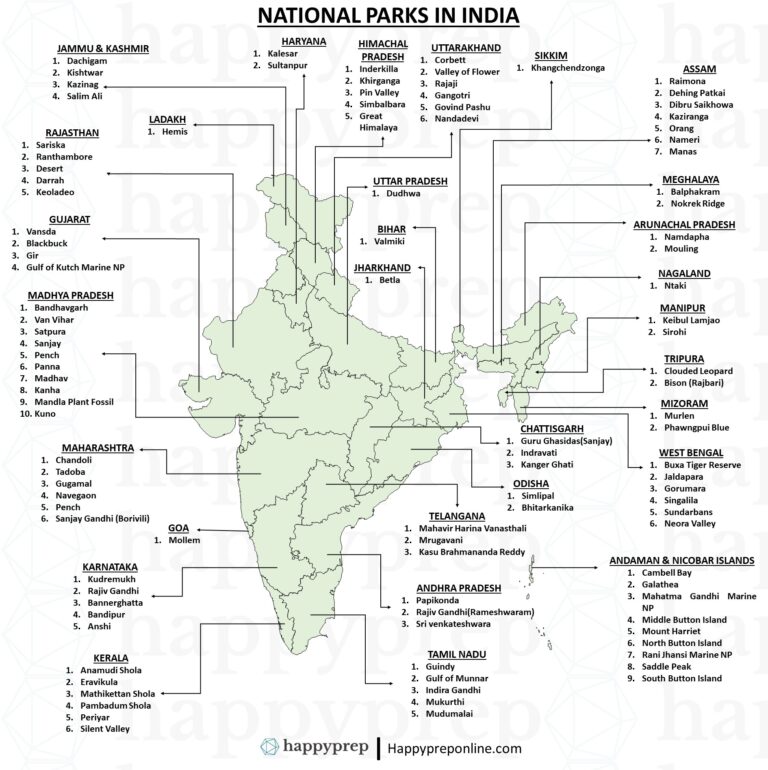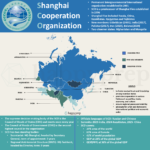National Parks in India

India, a land of diverse landscapes and rich biodiversity, boasts numerous national parks that offer a sanctuary for its wildlife and a retreat for nature lovers. The visitors get the opportunity to immerse themselves in the beauty and biodiversity of these protected land of India. The national parks are the areas demarcated to protect, propagate and develop the wildlife and it’s environment. No human activity is permitted in these protected area. National Parks in India serve as safe havens for endangered species, help maintain ecological balance, and protect biodiversity.
Uses of National Parks
Conservation: National parks are essential for the protection of wildlife and their habitats. They ensure the survival of species that are threatened by human activities such as deforestation, poaching, and habitat destruction.
Recreation and Tourism: These parks attract millions of tourists every year for activities like wildlife safaris, bird watching, trekking, and photography. This not only brings joy and relaxation but also generates revenue and employment for local communities.
Education and Awareness: National parks offer educational programs and nature trails that help raise awareness about the importance of conservation. Schools and colleges often organize trips to national parks to educate students about wildlife and the environment.
Research: Scientists and researchers utilize national parks to study flora and fauna, understand ecological dynamics, and develop conservation strategies.
- Cultural Heritage: Preserve sites of cultural and historical significance within their boundaries
Difference Between National Parks and Biosphere Reserves
National parks and biosphere reserves both aim to protect natural environments however they serve slightly different purposes and operate under different frameworks:
National Parks: These are strictly protected areas established to conserve the natural environment and biodiversity. Human activities are highly restricted, with the primary focus on preservation. The creation of national parks is governed by national laws, and activities such as logging, hunting, and grazing are prohibited.
Biosphere Reserves: These are larger areas designated under UNESCO’s Man and the Biosphere (MAB) Programme. They include zones that allow sustainable economic activities alongside conservation. Biosphere reserves typically have three zones: the core area (strictly protected), the buffer zone (limited human activity allowed), and the transition area (sustainable resource management and community involvement).
Basically, national parks are more focused on strict conservation whereas the biosphere reserves aim to balance conservation with sustainable use of resources by local communities.
Want to read some more articles?
-
 Shanghai Cooperation Organization (SCO): Origin, Members, Facts, etc for UPSC and other exams
Shanghai Cooperation Organization (SCO): Origin, Members, Facts, etc for UPSC and other exams -
 BRICS: Origin, members and others for UPSC, PSC & other exams
BRICS: Origin, members and others for UPSC, PSC & other exams -
 BIMSTEC for UPSC: Origin, Members & More
BIMSTEC for UPSC: Origin, Members & More -
 General Science for Competitive exams: UPSC, PSC, APFC, EO-AO, SSC, etc
General Science for Competitive exams: UPSC, PSC, APFC, EO-AO, SSC, etc -
 THE TRADE UNIONS ACT, 1926 for UPSC EPFO APFC/EO-AO, ALC, and Other exams
THE TRADE UNIONS ACT, 1926 for UPSC EPFO APFC/EO-AO, ALC, and Other exams -
 Understanding Macroenvironment: Marketing Environment in Principles of Marketing
Understanding Macroenvironment: Marketing Environment in Principles of Marketing -
 Understanding Microenvironment: Marketing Environment in Principles of Marketing
Understanding Microenvironment: Marketing Environment in Principles of Marketing -
Interjections in English
-
Conjunctions in English
Recruitment notifications update!
-
Recruitment 2025: Recruitment for Teaching Staff in The School of Planning and Architecture, New Delhi - Vacancy, Posts, Grade Pay, etc
-
Recruitment 2025: Vacancies in Inter-University Centre for Astronomy and Astrophysics (IUCAA)
-
Recruitment 2025: Recruitment on Deputation basis in National Anti Doping Agency (NADA)
-
Recruitment 2025: Various vacancies in Artificial Limbs Manufacturing Corporation of India (ALIMCO)
-
Recruitment 2025: Various vacancies in Land Ports Authority of India
Copyright© 2024 | All rights reserved | Made in India
